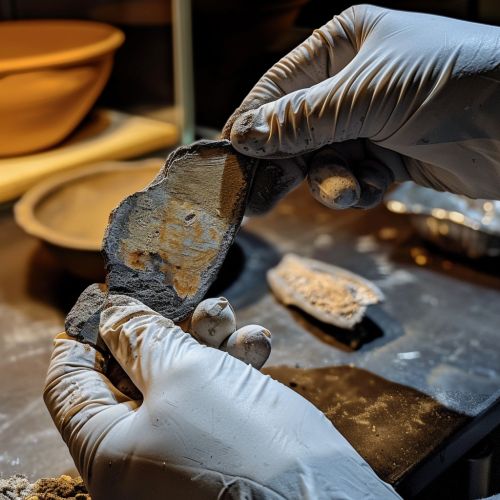Archaeomagnetism
Introduction
Archaeomagnetism is a method of dating archaeological materials by comparing their magnetic properties with known changes in the Earth's magnetic field over time. This technique is based on the principle that the Earth's magnetic field varies both in direction and intensity over time, and these changes are recorded in materials that contain magnetic minerals, such as pottery and hearth sediments.


Principles of Archaeomagnetism
Archaeomagnetism relies on three fundamental principles: the Earth's magnetic field, the magnetic properties of certain materials, and the ability of these materials to record changes in the Earth's magnetic field.
Earth's Magnetic Field
The Earth's magnetic field is generated by the movement of molten iron within the Earth's outer core. This geodynamo creates a magnetic field that extends from the Earth's interior into space, where it interacts with the solar wind, a stream of charged particles emanating from the Sun. The Earth's magnetic field is not constant; it varies both in direction and intensity over time, a phenomenon known as geomagnetic secular variation.
Magnetic Properties of Materials
Certain materials, such as iron-rich minerals found in pottery and hearth sediments, have magnetic properties. When these materials are heated to high temperatures, their magnetic minerals align with the Earth's magnetic field. Upon cooling, the alignment of these minerals is locked in, providing a record of the Earth's magnetic field at that time. This is known as thermoremanent magnetization (TRM).
Recording of the Earth's Magnetic Field
When archaeological materials are heated and then cooled, they record the Earth's magnetic field at the time of their last heating. This record can be measured in a laboratory using a magnetometer. By comparing the recorded magnetic direction and intensity with a regional secular variation curve, the date of last heating can be estimated.
Methodology
The process of archaeomagnetic dating involves several steps, including sample collection, laboratory measurement, and data analysis.
Sample Collection
Archaeomagnetic samples are usually collected from features that were heated in the past, such as hearths, kilns, or pottery. The samples are oriented in the field using a compass and inclinometer, and their location and context are carefully recorded.
Laboratory Measurement
In the laboratory, the samples are measured using a magnetometer, which determines their magnetic direction and intensity. The samples are then subjected to a series of laboratory heating and cooling cycles, known as demagnetization, to isolate the ancient magnetic signal from any subsequent magnetic changes.
Data Analysis
The measured magnetic direction and intensity are compared with a regional secular variation curve, which represents changes in the Earth's magnetic field over time. By finding the best match between the sample data and the secular variation curve, the date of last heating can be estimated.
Applications
Archaeomagnetic dating has been used in a wide range of archaeological contexts, from prehistoric times to the recent past. It has been particularly useful in dating fired structures and ceramics, but it can also be applied to other heated materials such as burnt stone or soil.
Limitations
While archaeomagnetic dating is a powerful tool, it also has limitations. The technique requires that the archaeological material was heated in the past and that it contains sufficient magnetic minerals. It also assumes that the recorded magnetic signal has not been altered since the time of last heating. Finally, the accuracy of archaeomagnetic dating depends on the availability and quality of regional secular variation curves.
